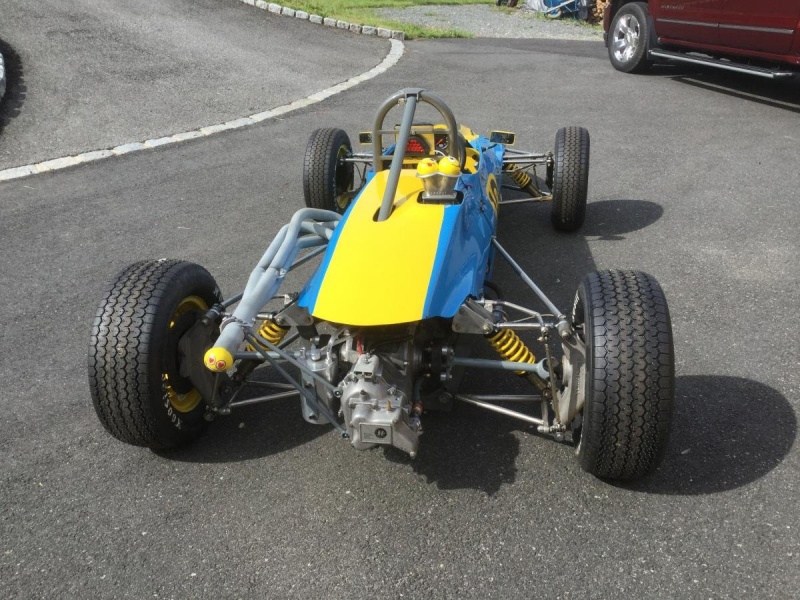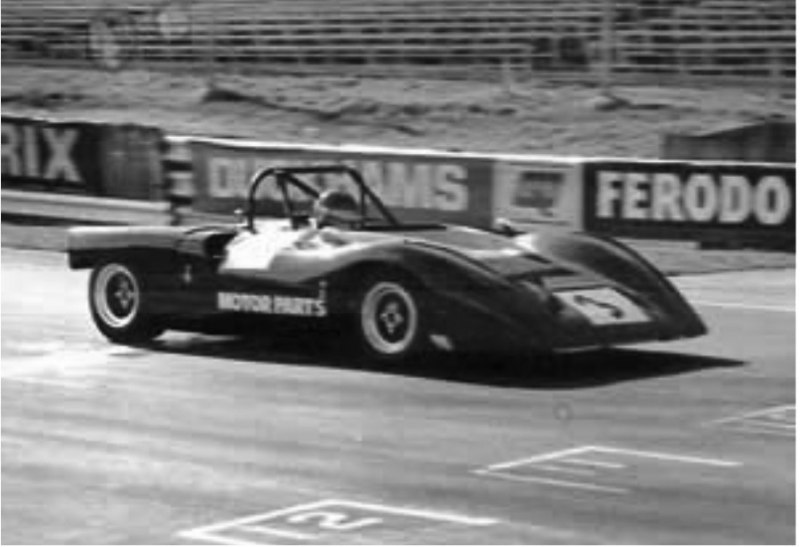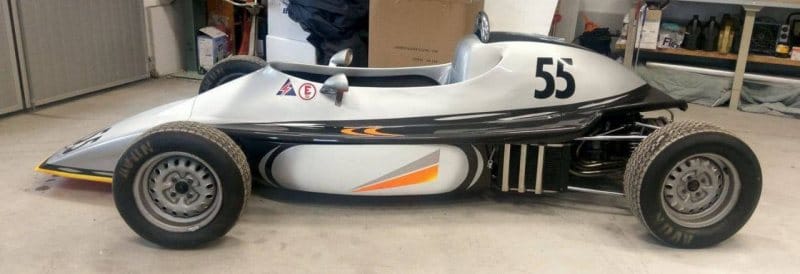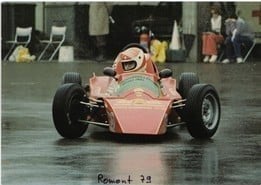The Elden Story
Formative Years
It all started in the late ’50s with Brian and Peter Hampsheir. Brian left school in ’57 with his interests already centered around motor sport. Peter stayed on at school and gained a degree in Mechanical Engineering. It was during his studies in 1961 that he designed his first car – an 1100cc sports racing car along the lines of a Lotus 11 or Lola. However as neither could weld or fabricate, the only way to make progress was to carry parts to the local welder to have work done. They soon realised that this was not the way to succeed so eventually the first project (later to be dubbed the Briham PRH1) was shelved.
Brian was now heavily into racing and, with their father’s assistance, competed in a variety of cars. The list includes an Austin Healey Sprite, MGA, Lotus 7, Jaguar 2.4 and even a Formula Junior Emeryson previously owned by Mike Spence. Peter usually prepared the cars. Although enjoying his racing, Brian readily admits that “My racing career was marked with mediocrity”, so a Formula 1 drive was not in the offing.
Things came to an abrupt end at Goodwood in 1963 when a Morgan Plus 4 spun in front of him and could not be avoided. A second incident, this time a road accident, put a stop to any thoughts of a return when doctors refused to sign him fit to race again. Whilst competing was off the menu, Brian still retained a deep desire to remain in the sport. When the brothers saw a Johnny Walker Formula 4 (JW4) being tested at Brands Hatch, Peter reckoned they could do better.
Now armed with ideas, enthusiasm and a small amount of compensation from Brian’s accident they set about creating a Formula 4. Nine months later (in late 1966) the Briham PRH2 Formula 4 (250cc) Villiers engined racing car was completed. In its construction, Peter had used a new material called “Mallite”: a sandwich of end-grain balsa wood faced with aluminium. This had already been used by Bruce McLaren in his first F1 car, however, Peter used it in a totally new way by employing a top panel and dropping bulkheads from it, then bonding this structure in a glass fiber shell using steel reinforcement to pick up the suspension load. The resulting tub was light, stiff and cheap. Front suspension was by rocker arms with inboard dampers front and rear. All very advanced stuff in 1966. The prototype was exhibited at the Racing Car Show in January 1967.
1967 was a busy time for Peter and Brian. With Formula Ford gaining in popularity and Formula 4 rule changes, a lot of experience was gained for relatively little financial reward. The PRH3 – a Formula Ford space frame version of the PRH2 – was produced but never raced. The Formula 4 (PRH2) was further developed and fitted with the new regulation size 650cc engine and a Manx Norton gearbox acquired from Bev Bond, to become the PRH4. The advanced glassfibre and Mallite monocoque machine was driven in ’67 by Peter Orr who at the time was manager of Piper Cars & Engines at Hayes, Kent. The PRH4 was very quick which invariably put the car on the front row of the grid, but engine reliability severely reduced the number of times the chequered flag was seen. (Cracked barrels were a problem in seven out of nine races!). Finances had prevented the use of the far better and more reliable Triumph Bonneville unit. However a test drive by Mike Cotton of Motoring News produced some interest, and later – in 1968 – five further PRH4 models were produced, all of which were exported to the USA via Jan Winkel of WREP Inc. who became the appointed US distributor.
1968 saw a further increase in Formula 4 engine capacity to 850cc, making the Hillman Imp engine and transaxle attractive. Bob Jarvis commissioned a further development of the PH4 for the Imp engine, (called the PH5), but this time the chassis had been stretched beyond its limits and it was not a success. Peter also penned a Group 6 sports car at this time, but it did not progress beyond the drawing board. Thus as 1968 drew to a close five different models had been developed under the Briham label and an important part of the learning curve had been travelled. Unfortunately, financial stability was still nowhere in sight!





